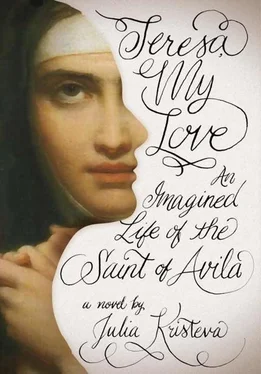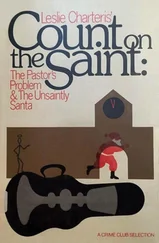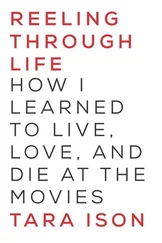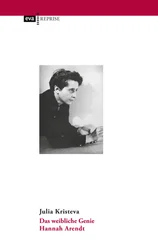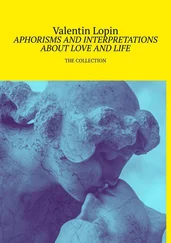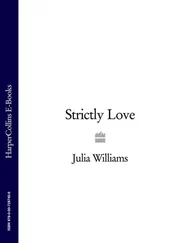Unplanned and futureless, that strange, long embrace, outside of time, outside of place, had the tang of impossibility, and we both knew it. All the more reason not to let go, to cling on, with bodies on fire and bellies throbbing, in a weightless suspense that was neither erotic nor antierotic: more than perfect, pluperfect. As the pluperfect tense indicates an action completed before another action in the past, so must our ancient histories, Bruno’s and mine, have crossed in the far distant past, around follies and temerities that had been lived and left behind by others long before us. For a quick moment this past made as if to snatch us out of our skins before bringing us back, inevitably but undramatically, for once, to those pleasures we still call physical — according to Mother, Colette, or Sagan, I’m not sure which. All of a sudden our bodies felt pneumatic, impalpably light, drained of passion. Just a smile and a swarm of symbols and memories, a trail of exploding grenades.
Silence, taxi, “Take care of yourself,” “Work well,” “I’ll call you,” “I’m going away tomorrow.” Serenity.
He’s going away, I don’t know where or with whom, and I don’t care. Attempting to decipher Teresa’s experiences is pride and exhilaration enough. Now Bruno’s effervescent kiss makes me think that the headiness of it might be shared, like lonelinesses are shared that do not communicate but walk side by side into infinity. And it reminds me, if need be, that the most ideal quests keep me enthralled only insofar as they are wedded to the body. Alright, it’s my job to know that, I knew that. The extraordinary thing is that it took that silly, infuriating Bruno to remind me of it!
Build up a little database gleaned from the history of mysticism — now there’s an idea. After the Café Marly kiss plus the sensual details provided by my Teresa and avidly drunk in by me, I’ve lost my ability to classify, systemize, and synthesize. The useful oddments I come across in the works of theologians and other religious historians keep breaking up and scattering, before adhering like magnets to one another at the whim of my moods and fancies. I rearrange, I draw my Carte de Tendre ,* my topography of feeling, in Teresa country. [ *La Carte de Tendre : map of the emotions engraved in Madeleine de Scudéry’s Clélie , 1655–1661.—Trans.] Did I say country? “Continent” is a better word for that mystical universe that Teresa may not necessarily have understood or truly explored, but which precedes her, surrounds her, and nourishes her unawares. Yesterday it made her more intelligible to me; today, however, I feel it muddying her singular, boundless, scandalous trail.

Whereas in canonical faith all souls are divine and by the same token immortal, I use the word “mystical” to denote a psychosomatic experience that reveals the erotic secrets of that faith in a parlance that it either constructs or silently refuses. In the mystical experience an extraordinary union comes about — while the speaker is in life — between the soul and his or her God, the finite cleaving to the infinite in order to consummate its true eternity, “alone with God” in the most immediate, intimate sense of a successful incarnation and indwelling. The body wounded by desire experiences and signifies its unspeakable union with the “fundamental principle of being” (Lalande), 3with the Other (Lacan), 4with “Christ’s humanity” (Saint Teresa of Avila). The figures of this hierogamy, this sexual and sublimated osmosis with the absent Beloved may vary, but each inscribes a fracture in the sacral community to which they pertain, and by derivation often touch upon the social and political pact itself. Maximal singularity, rupture of links, recasting of the religious, or of the a-theological quest: mysticism is regarded by “ordinary people” as a form of inner, albeit extravagant, wisdom at odds with the official knowledge, whether ecclesiastic or secular, that so readily reveres it when unable to recuperate it retrospectively.
The impossible desire for a lacking love object is exaltation and pain that are hidden, reticent, at once thrilling and morbid. Excess or emptiness? Or both? The word mystery , from the Greek μυω , “to conceal,” to be closed up (like lips or eyes or sores) goes back to the Sanskrit mukham , “face,” “mouth,” “entrance.” But the mystics, nurturers of this most inner of interiorities inhabited by the All-Other ( le Tout Autre ), transmute it to the outside — and hiddenness becomes a path. Life bursts into fullness, absence into genuine presence, suffering into bliss, mortification into delight, Nothingness into ecstasy, and vice versa. Religious space is thus transformed into a stage for love, while the search for truth becomes a matter of body-to-body, spirit-to-spirit, body-to-spirit encounters. Mysticism, without distinction of “categories,” embarks on a genuine recasting of metaphysics.

The earliest instances of the word “mystic” appear during the first century, in Pseudo-Denys the Areopagite, 5sharpened to a fine point of Neoplatonism with Plotinus’s aphelepanta (“Leave everything behind!”) 6and even Aristotle’s theôria in contemplation of the One, 7separate from what can be apprehended by the senses.
And yet, far predating this lexical appearance, hints of “mysticism” abound throughout the Bible. Moses finding God in the midst of the burning bush, 8Ezekiel with a vision of God’s chariot, receiving a scroll he must eat in order to deliver its message; 9these are scenes in which reason is overturned in the clearest light of day. Indeed, mysticism filters into the apocalyptic scriptures (the books of Enoch and Esdras), into Essenian convents, the Pharisee world, and the thought of the Jewish Mishnah masters — all these being focused on the knowledge and contemplation of God and his throne ( Merkabah ), goal of the mystical progress through the heavenly palaces. Various aspects of the Torah (oral revelation) and the Talmud contain mystical tendencies. Thus the subtle reasonings, like “mountains hanging from a hair,” of the Torah’s inspired scribes; the thirty-two logical rules defining the ways of acceding to Talmudic wisdom and developing the dialectics of reason, aim to elicit visions with the supreme goal of man’s identification with God. Then, from the first century B.C.E. to the tenth C.E., the Kabbalah comes to swell this biblical and Talmudic initiation. It calls the earthly world into being through the operation of twenty-two originary letters in the air, creative entities whose permutations express every idea and every thing. Pharisees, Essenians, the journey through the Hekhalot —palaces of Heaven, which Teresa will call moradas , the seven dwelling places of her Castle — the mystical impulse reemerges in thirteenth-century Spain and Germany. Contemplation, based on a scriptorial combination and practiced by means of techniques recalling those of yoga (breathing, positions of the body, musical notes), culminates in prophetic ecstasy, supernatural illumination, identifying man with the Torah, with the Word, and with God. Cross-fertilization with Islam and Christianity enriches these mystical currents, while Islam and Christianity in turn absorb the wisdom of visionary Kabbalists, despite and throughout the vicious persecutions, expulsions, and exterminations suffered by the Jews.
During the Middle Ages, a full-blown “medieval Jewish philosophy” flourishes in counterpoint to Arab philosophy. Unacquainted with Greek metaphysics, Talmudic thought that could be described as a monism of thought and action nonetheless developed a rich ambivalence between abstract speculation and mystical experience. Theological ignorance of God, who is undefinable by definition, does not rule out a loving knowledge of Him based on the Alliance: through the concept of shekhinah , God accompanies the exiled Jew on earth. The medieval gaon —a spiritual master such as Saadia Gaon, the political leader of the eastern diaspora — links rationalistic interpretation with enthusiasm for revelation; the commentary on the Sefer Yetzirah , 10that germ of the Kabbalah, with the moderate religious philosophy followed by the Muslim Kalâm. As part of the same opening toward philosophical reflection, Jewish mysticism evolves with Judah Halevi 11and Maimonides, 12preceded by Ben Joseph of Fayum, 13Solomon Ibn Gabirol, 14who looks deep into his affinities with Plato, 15Philo of Alexandria, 16and Gnosticism. Not forgetting Bahya Ibn Paquda, 17who stands at the intersection of these tendencies, or Abraham Abulafia, 18who takes up the theory of the mystical power of the alphabet to explore the “unknotting of the soul” by means of musical experiments with arpeggios, transpositions, canons, and fugues. At last comes the surpassing step that is the Zohar , in the second half of the thirteenth century: the Sefer ha-Zohar , or Book of Splendor , whose presumed author, Moisés de León, insisted on attributing it to a second-century Mishnah scholar. 19Reprising the Sefer Yetzirah , the Zohar drops the distinction between “spirit” and “letter,” condensing them instead into an indivisible unit. And gathering the diverse components of Jewish mysticism into one harmonious structure, it graces the exile of Israel with the ultimate meaning of releasing the “divine sparks” and completing the work of redemption. 20Translated into French by Jean de Pauly, 21the Zohar went on to influence no less a figure than Marcel Proust! 22
Читать дальше
